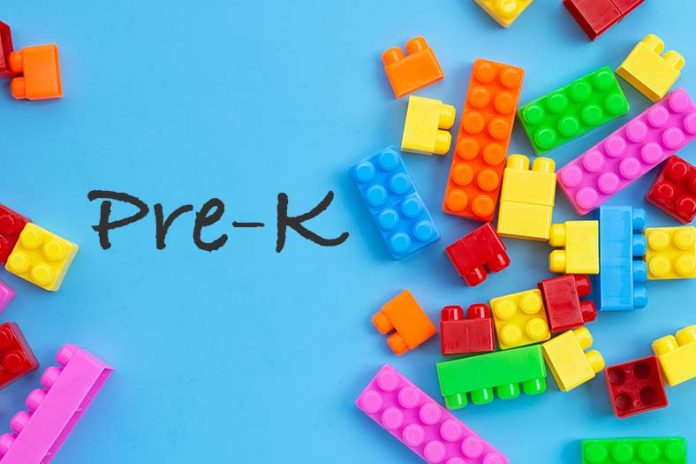By Stefanie Jackson – The Accomack school board at its early December meeting heard a teacher’s firsthand account of the Virginia Preschool Initiative (VPI) and how the program for at-risk 4-year-olds is implemented in Accomack’s pre-K classrooms.
“If you come into a VPI classroom, the question you’re going to hear again and again is, ‘How do we know?’ It’s a question that keeps us accountable; it keeps the students accountable for their work,” said Jennifer Lee, a pre-K teacher at Pungoteague Elementary School.
VPI distributes state funding to schools and community-based organizations to provide quality preschool education to 4-year-olds who are at risk and are not served by the federally funded Head Start preschool program.
A quality pre-K program has “effective teacher-child interactions,” meaning the teacher is having positive and responsive conversations with the students, Lee said.
To keep the teachers accountable and determine if effective communication is occurring between them and their students, PES uses a classroom observation tool called CLASS: the Classroom Assessment Scoring System.
Teachers can use a CLASS “cheat sheet” to help them implement teaching behaviors that support children’s cognitive development and language acquisition, or an administrator can observe the classroom to identify the presence or absence of the desired teaching behaviors.
The feedback received through the CLASS program is used to plan professional development, Lee said.
“A lot of times, when we think about school, the kids are very passive and the adult’s up there, working hard, and the students are very quietly sitting at their desks. We do not want that in a preschool classroom,” she said.
The goal is the teacher working with the student to “elicit language,” Lee said.
Since the COVID-19 pandemic, learning in the pre-K classroom looks a little different. Before the pandemic, pre-K students would sit in a circle on the floor on a colorful rug. Now the students sit in desks spaced 3 feet apart, but the learning materials they use are the same.
“We provide a rich … variety of materials, but the students choose what they’re going to be using that day. That gives them choice and agency and it also really gets them involved … to take the lead on their learning,” Lee said.
She provided an example of teaching language through teacher-student interaction. A video of Lee in the classroom showed her speaking with a student who chose to play with blocks.
The student explained that he wanted to build a tower “to there,” pointing upward. Lee restated his idea, using vocabulary words such as “floor” and “ceiling,” teaching the student more complex language.
She used this teaching method, repetition and extension, again when the student said he was “putting more on there,” and she asked him, “are you taking some away or are you adding it?”
The student was taught the concept of addition, preparing him for more advanced mathematics.
“It’s OK to use big words around small kids. Exposing them to those big words means that later, when we want to hold them accountable for that knowledge, they’ve heard that word before … they have something they can attach it to,” Lee said.
Children can learn a variety of concepts through self-directed play. Lee noted that when the student discovered he could not build a tower of blocks in a single stack from floor to ceiling, he tried different building methods the next day.
“He made himself a base. He learned about physics and engineering. He learned about max capacity – ‘There’s only so much load this can take before it topples over, but what if I build it differently?’” Lee said.
She cited the Perry Preschool Project as evidence that high-quality education has a positive impact on preschool children.
The project was named for Perry Elementary School in Michigan, about 35 miles from Detroit, where the study began in 1962 to determine if a high-quality preschool program helped improve the cognitive skills of disadvantaged African American children.
The research was conducted under the guidance of psychologist David Weikart, with the cooperation of Perry Elementary School Principal Charles Eugene Beatty.
According to www.highscope.org, by age 5, 67% of the children in the preschool program had an IQ of 90 or higher, compared to only 28% of children in the control group.
The study ended in 1967, but researchers continued to follow up with its 123 participants through their adulthood, through age 40.
The Perry project found that students who had attended a high-quality preschool program were less likely to experience teen pregnancy, and they committed fewer crimes.
The same students were more likely to have graduated from high school, hold down a job, earn higher wages, and own a home and car.
The cost of the Perry Preschool Project was more than $15,000 but saved the community about $2,700 in welfare payments and more than $171,000 in crime-related costs.
The program’s total return for every dollar invested was $12.90.
“By age 40, those kids were less of a burden on the system, and they were contributing,” Lee said, “because when you enjoy your education and you have better learning outcomes, it tends to lead to better employment, higher earnings – which means greater tax revenue for the county – and it also means they’re less likely to be incarcerated or to need welfare or other assistance that costs the county.”
She said, “We build a strong foundation, the kids put their learning on top of that foundation, and then they become future citizens prepared to use those big words, earn that big money, and give back to their community.”



